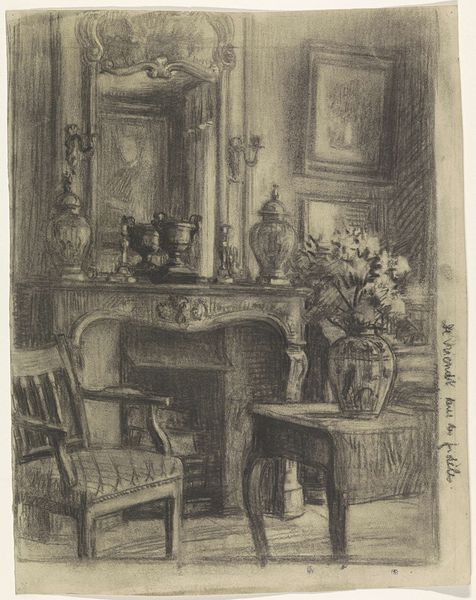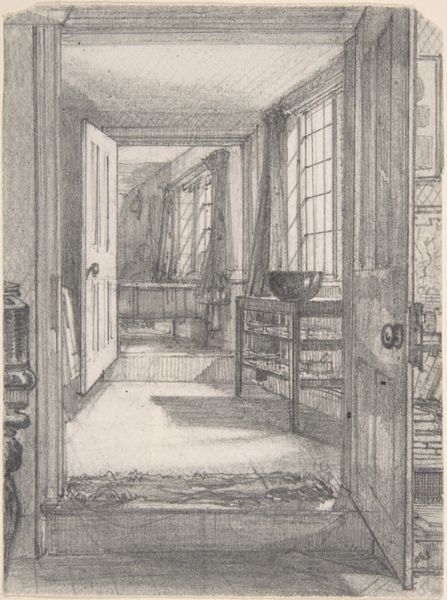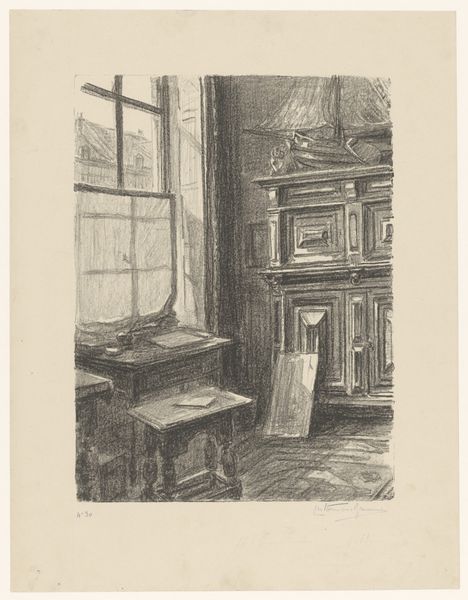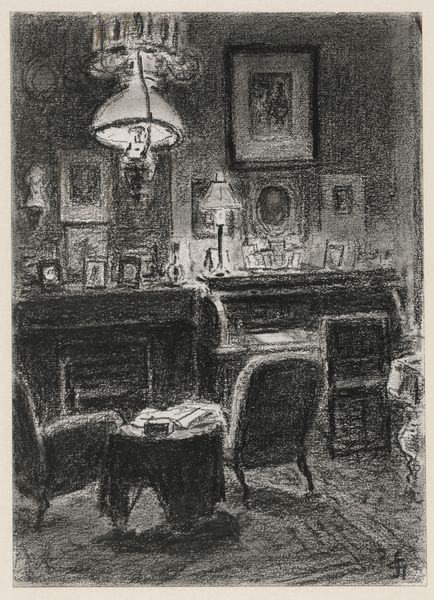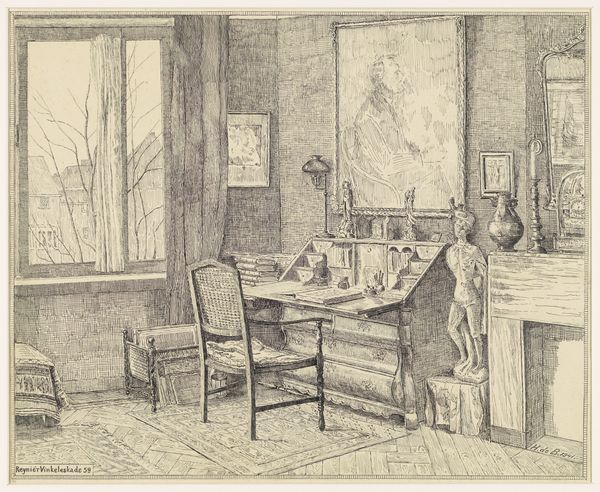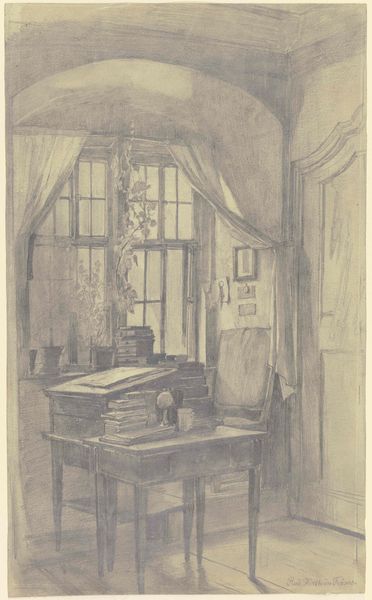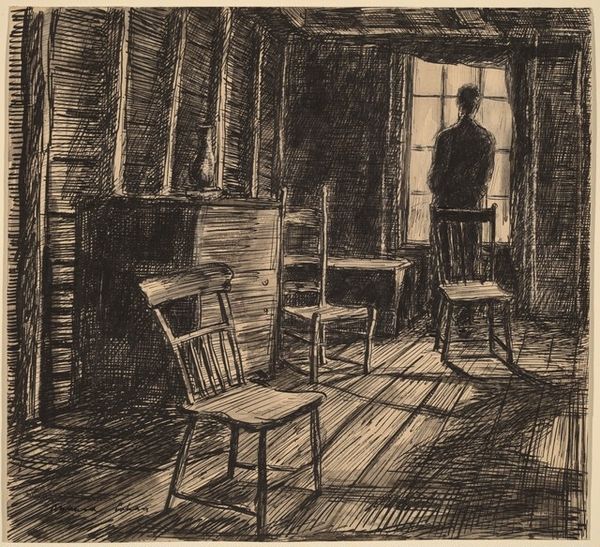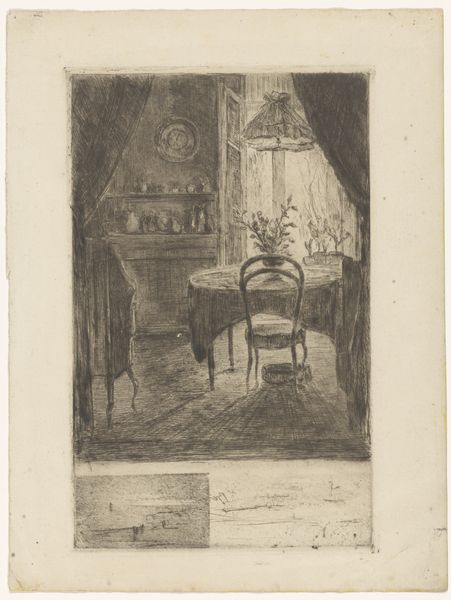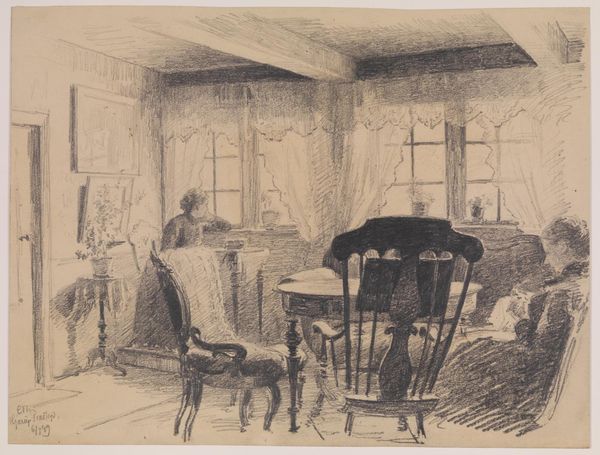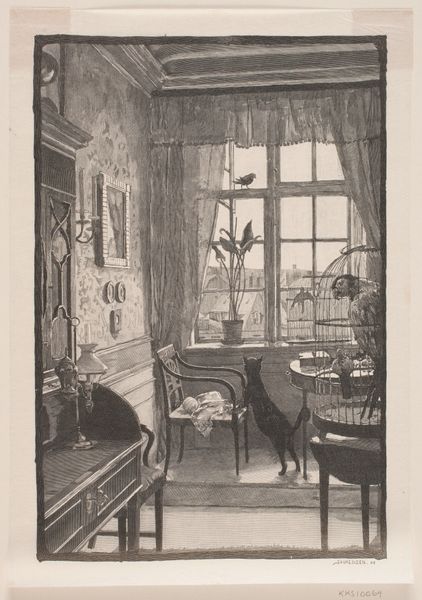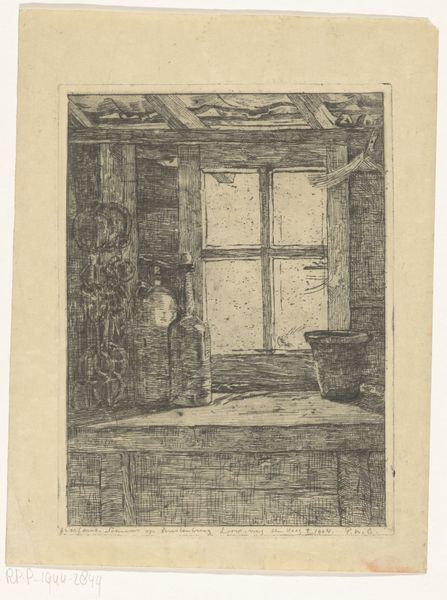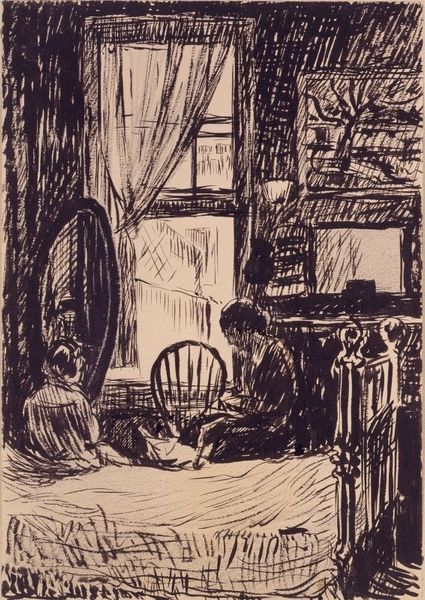
Copyright: Public Domain: Artvee
Curator: Magnus Enckell, a Finnish symbolist artist, created this work titled "Interior" in 1905, employing ink and possibly watercolor in its creation. Editor: You know, the first thing that hits me is the light—it's like this quiet, dusty sunlight flooding in, making everything feel a little… spectral. Curator: That’s an interesting observation. Considering the socio-political climate of Finland at the turn of the century, which was marked by Russian oppression and a growing sense of national identity, one can interpret this interior space as representing a longing for domestic tranquility and perhaps even a yearning for self-determination. Editor: Wow, okay, heavy. I was just thinking it kind of looks like my grandma’s house! The stark, almost bare table, the mismatched chairs… there’s this sense of austere simplicity. Like, maybe these aren't luxury commodities, but are humble belongings? Curator: Precisely! This simplicity can be understood as a conscious rejection of the ornate styles favored by the Russian elite, a subtle assertion of Finnish cultural identity. Also, consider that domesticity was often framed as a gendered space, trapping women within its confines. Enckell was queer, his exploration of this very typical and somewhat unfulfilling interior scene could speak to these gendered and class assumptions. Editor: Ah, okay, I see! It's like he's flipping the script on traditional domestic scenes by stripping it down. Plus, you’ve got those skeletal-looking plants on the table. Kinda goth for grandma, right? Curator: While the plants introduce a somewhat moribund, existential feel, one might consider these as an almost devotional offering to the quiet contemplation of the space. The window—the possible escape! The textures become almost painterly through his cross hatching style which reminds me a lot of Julia Margaret Cameron’s focus and intensity. Editor: Yeah, the window! It almost feels like it is another painting hanging right next to the wall. So, it seems we have found two artworks contained as one. It makes me think of a haiku. Curator: Yes! I agree, and through that very point, it showcases Enckell’s dedication to not only Impressionism, but moreover Symbolism that really was taking hold. Editor: I never would've gone so deep without that background info. It shows you that an artful perspective and art history must work together. Thanks. Curator: Of course, art’s real power is in starting dialogues that transcend mere aesthetics.
Comments
No comments
Be the first to comment and join the conversation on the ultimate creative platform.
